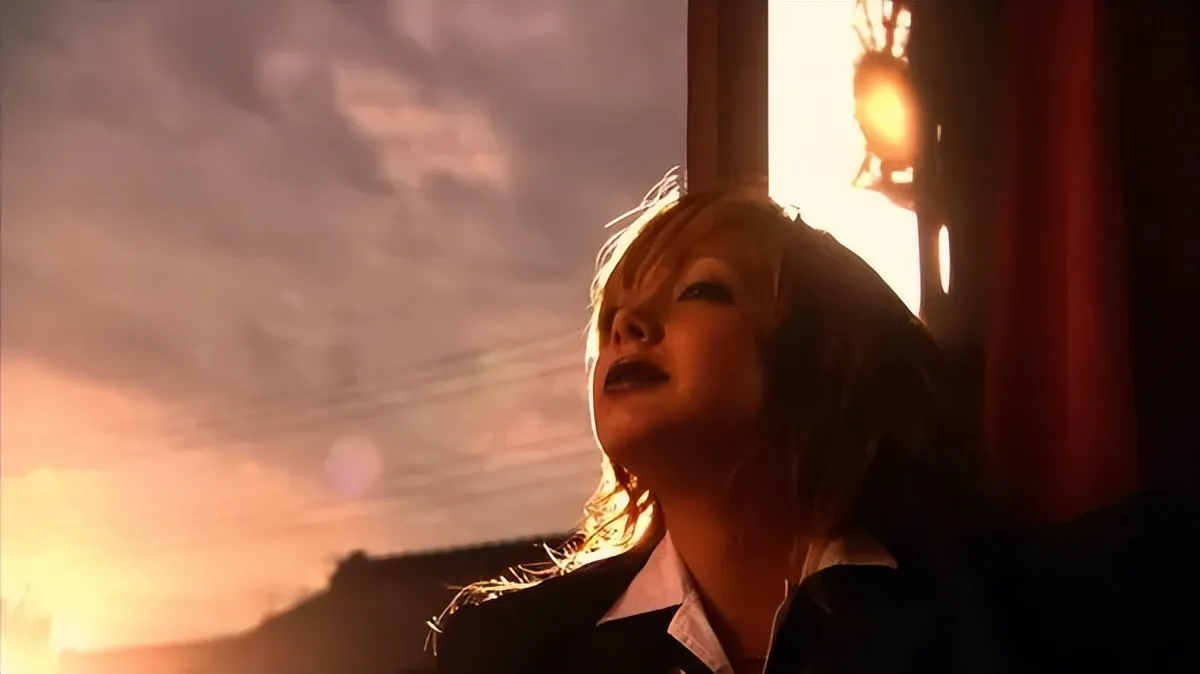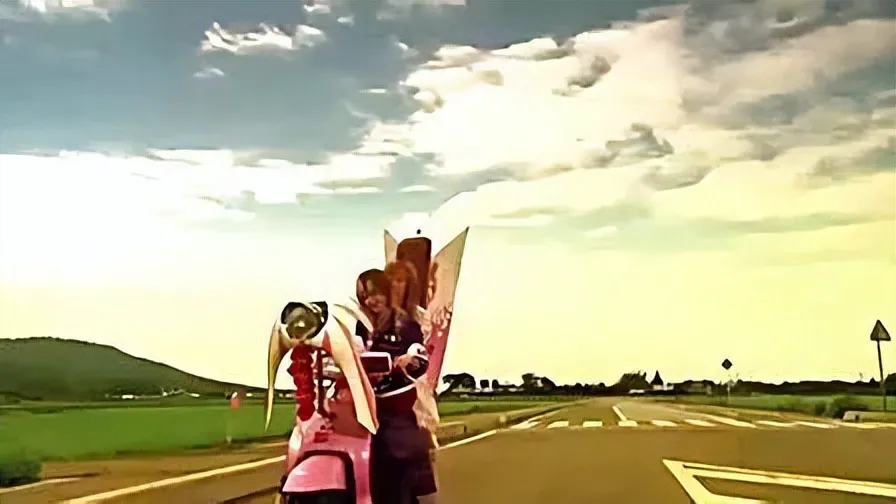The world is vast, yet its capacity for acceptance often feels disappointingly small.
Unique opinions are met with criticism, and unconventional attire draws judgmental stares, as if there’s only room for one type of person.
However, even in this expansive world, two extraordinary individuals can create their own intimate universe.
Kamikaze Girls (Shimotsuma Story)
“Kamikaze Girls,” also known as “Shimotsuma Story,” is a comedy film directed by Tetsuya Nakashima, starring Kyoko Fukada and Anna Tsuchiya.
The film garnered nominations for Best Actress and Best Supporting Actress at the 28th Japan Academy Film Prize, with Anna Tsuchiya winning the Best Newcomer award.
Story Overview
Momoko, a high school girl living in the rural town of Shimotsuma, has a deep passion for Rococo fashion.
To afford the expensive Rococo dresses, she starts by swindling money from her father and eventually turns to selling counterfeit goods online.
Ichiko, a biker gang girl, seeks out Momoko to purchase fake brand items. The two meet and gradually become friends.
Ichiko, who was rescued from bullying by the biker gang, wants to embroider a commemorative jacket for the gang leader’s retirement parade.
Seeking a legendary embroidery shop, Ichiko tells Momoko the story of the biker gang legend, “Pamela,” who saved many biker girls.
To earn money for the embroidery, Ichiko and Momoko go to an arcade, where Ichiko meets Ryuji, a boy who captures her heart.
Momoko goes to the trendy Daikanyama district to buy clothes, taking Ichiko along to search for the embroidery shop.
After shopping, they search for the shop until nightfall, but Ichiko abandons Momoko after spotting a celebrity. Momoko becomes furious, and they have a big fight and separate.
They meet again at the train station on their way home. Ichiko wants to leave, but Momoko, wanting to reconcile, decides to embroider Ichiko’s commemorative jacket herself.
Momoko works tirelessly and completes the embroidery. Ichiko is overjoyed, and they reconcile.
Momoko’s excellent embroidery skills catch the attention of a Rococo fashion store owner, who offers her a job embroidering new designs. However, Momoko is troubled by the idea of working for a living doing her hobby. Meanwhile, Ichiko discovers that the man marrying the biker gang leader is Ryuji, the boy she likes, and decides to break ties with the biker gang.
After hearing from her father, a former gangster, about the seriousness of breaking ties with a gang, Momoko decides to prioritize saving Ichiko, even if it means missing the embroidery deadline.
On the other hand, Ichiko’s biker gang claims that they are merging with another gang under Pamela’s orders, but Ichiko believes that Pamela would never issue such an order.
During the biker gang’s attack, Ichiko is badly beaten. Momoko explodes and uses a lie about Pamela to subdue the gang members. After they leave, the story of Ichiko and Strawberry (Ichigo) begins to circulate within the biker gang.
I. Escapism and Conformity
Momoko loves Rococo and yearns for its origin: 18th-century France. Momoko describes Rococo as “indulgence.” She is willing to indulge in this beautiful and absurd art. She also applies her understanding of Rococo to her life philosophy: “As long as you’re happy.”
This is inextricably linked to her chaotic life.
Momoko’s father is a small-time crook who sells fake designer goods, and her mother is a hostess in Kabukicho. They met by chance, got pregnant, married, and had a child. Then, her mother had an affair, and her father lost his job and moved to the countryside. Momoko has never experienced the love and stable environment that children in ordinary families receive.
She turns to Rococo fashion as a way to cope with being neglected in her life. In this beautiful Rococo world, she can transform herself from a participant in life to an observer, which is why she can say, “As long as you’re happy.”
There are scenes in the film where Momoko floats into the air while talking, which is a subtle way of showing that Momoko’s attitude is frivolous, detached from reality, and dreamy.
Ichiko, on the other hand, joins the biker gang after being rescued from bullying.

Ichiko goes from being alone in a crowd to being a part of another crowd, changing her isolated situation through another form of conformity.
But her method is not successful. She says she likes riding motorcycles with others, but in reality, she is always with Momoko. Finding the embroidery shop and going to the arcade are all done with Momoko’s company. She is even ridiculed by other biker gang members for always being with Momoko, who wears Lolita fashion. Even in the final showdown, it is just her and Momoko against all the biker gang members—she is still alone in this crowd.
II. Change
Escapism and conformity do not make Momoko and Ichiko happier. What truly makes them better is the beautiful relationship between them.
A Rococo girl and a biker gang girl seem to have a big gap, but they are similar in some ways—they are both lonely.
Two lonely people warm each other. Momoko gradually accepts Ichiko’s gangster appearance, and Ichiko starts calling Momoko “fluffy fabric” and goes shopping with her. They experience arguments, disagreements, and reconciliations, supporting each other through difficulties and decisions.
Momoko listens to Ichiko talk about her heartbreak, and Ichiko cares about Momoko’s attitude towards her Rococo work. Their companionship is not about interfering with each other, but about complete respect and considering things from each other’s perspective.
Momoko’s change is more obvious. At the beginning, she actively separates herself from others, not riding a bicycle or participating in sports activities. But after becoming friends and arguing, she chooses to actively express that she does not want to separate. When Momoko is troubled by work and hobbies, she actively asks for Ichiko’s opinion. After learning the meaning of breaking ties, she prioritizes saving Ichiko, even if it means missing the Rococo deadline and getting into a car accident on the way.
The film also inserts the Rococo shop owner’s attitude towards friends. When Momoko tells the owner that she is going to save Ichiko and will miss the deadline, the owner says that he gave up his friends for work. But in the end, he lets Momoko choose friends over work. The lonely owner is also moved by the relationship between Momoko and Ichiko.
Ichiko’s change is more subtle. It is a change from external matters to heartfelt matters. At first, she just asks Momoko to buy things. After experiencing many things together, Momoko learns her real name, Ichigo (Strawberry), and she entrusts her secret to Momoko—that Pamela is actually a fictional character.

Two girls laugh and tell each other their lies on a motorcycle, and they accompany each other all the way.
III. Detachment and Classicism
The film begins with Momoko’s car accident. Momoko is thrown into the air, and the audience enters the story as if watching Momoko’s life flash before their eyes. But as the story develops, we find that Momoko actually falls into a truck full of watermelons and can immediately get up and leave. Although absurd and detached, it seems strangely reasonable in this story. Moreover, the audience, with the foreshadowing of the previous plot, hopes that Momoko can get up—to stop Ichiko’s breaking-ties activity.
When Ichiko tells the story of Pamela, she uses comics as a form of expression. But in this absurd and funny story of biker gangs and Rococo, it does not seem prominent. But until the final reveal, the audience realizes that Pamela is fictional, which corresponds to its comic form in the real-life story.
In the final battle with the biker gang, the film shows the scene of the two sides fighting, but the background music is “The Blue Danube Waltz,” one of the representatives of Western classical music. This piece has a brisk rhythm and reflects a gorgeous atmosphere, which contrasts with the impact of the scene, but echoes Momoko, who is wearing Rococo fashion in the background.
This piece was born in a time of crisis and is a piece that gives people courage and strength. The film uses it as background music to imply that Momoko is accumulating courage and strength, laying the foundation for the subsequent resistance.

The story of Momoko and Ichiko, a Rococo girl and a biker gang girl, may have been possible in the millennial era, when new things were emerging and full of fantasy and magic. Perhaps in the past, perhaps now, there is another pair of Rococo and biker gang girls somewhere in this world where being different is considered a monster, building a small world that warms each other.